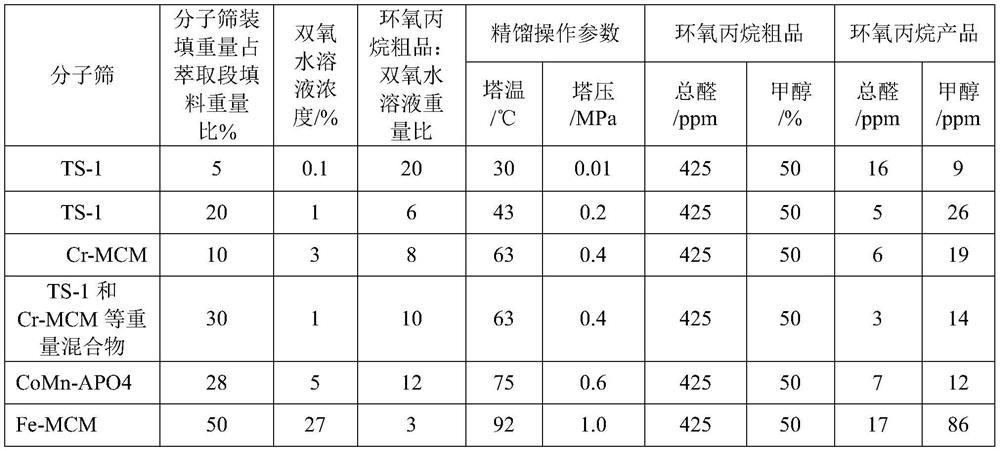A method for removing aldehyde impurities in propylene oxide by oxidation
A technology of propylene oxide and oxidation method, which is applied in chemical instruments and methods, organic chemistry, inorganic chemistry, etc., can solve the problems of frequent regeneration, fast decay of adsorption efficiency, and difficult separation by ordinary rectification, so as to reduce product loss and side effects The reaction and preparation process are simple, and the effect of eliminating nitrogen-containing wastewater
- Summary
- Abstract
- Description
- Claims
- Application Information
AI Technical Summary
Problems solved by technology
Method used
Image
Examples
Embodiment 1
[0025] Embodiment 1: molecular sieve preparation
[0026] (1) TS-1 (titanium silicon molecular sieve)
[0027] Mix 0.12 parts of tetrapropylammonium hydroxide, 0.065 parts of triethylamine, and 25 parts of water according to the molar ratio at room temperature, add 1 part of tetraethyl orthosilicate dropwise at 65 ° C, continue to slowly add butyl titanate and isopropyl Alcohol, after removing the alcohols from the obtained precursor solution at 80°C, transfer the obtained synthesis liquid into a hydrothermal reaction kettle, crystallize at 180°C for 150 hours, wash, dry, and roast at 550°C for 5 hours to obtain TS- 1.
[0028] (2) Cr-MCM (chromium-containing MCM molecular sieve)
[0029] Mix 1 part of sodium hydroxide, 1 part of cetyltrimethylammonium bromide, 250 parts of water, and 0.1 part of chromium nitrate according to the molar ratio at room temperature, and slowly add 3.5 parts of ethyl orthosilicate dropwise to prepare a synthetic molecular sieve Liquid, the synth...
Embodiment 2
[0034] Embodiment 2: Purification contains the propylene oxide crude product of aldehydes, methanol impurity
[0035] The middle part of the propylene oxide rectification tower is the extraction and rectification section, which is filled with molecular sieves according to a certain proportion of the packing weight of the extraction and rectification section. The crude propylene oxide is fed from the bottom of the extraction and rectification section, and the hydrogen peroxide solution is fed into Carry out rectification of propylene oxide at a certain temperature and pressure, the purified propylene oxide product is obtained at the top of the tower, and the oxidation product of aldehyde and methanol are discharged from the bottom of the tower.
[0036]
[0037] The content of the present invention is not limited to the content of the embodiments of the present invention.
PUM
 Login to view more
Login to view more Abstract
Description
Claims
Application Information
 Login to view more
Login to view more - R&D Engineer
- R&D Manager
- IP Professional
- Industry Leading Data Capabilities
- Powerful AI technology
- Patent DNA Extraction
Browse by: Latest US Patents, China's latest patents, Technical Efficacy Thesaurus, Application Domain, Technology Topic.
© 2024 PatSnap. All rights reserved.Legal|Privacy policy|Modern Slavery Act Transparency Statement|Sitemap

